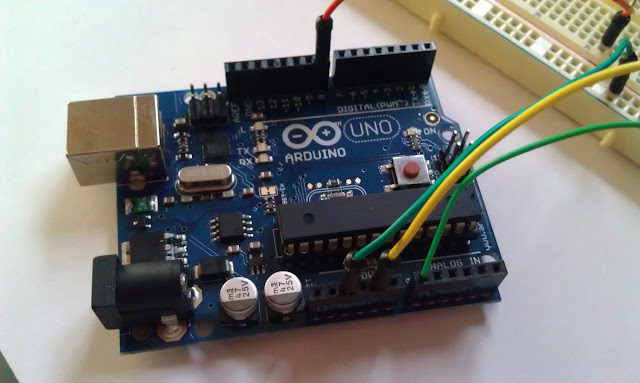I have been working on a diy drum machine for a while now. I wanted to post this video to show it’s functionality.
The core of this drum machine is from an electronic drum stick. You swing the stick and it makes drum sounds. The stick made 3 sounds; Snare, bass drum, and high hat.
When you swing the drum stick, it plays a snare sound. There are two buttons on the stick, that when pressed AND the stick is swung, play two more sounds. So this was easy to hook up to a 3-way switch with up as one button, down as another button, and middle was just like swinging the drum stick without pressing a button.
I rigged it up to a 555 timer and a 4017 decade counter and some pots and switches, and away it went. There is still some glitching that happens I think because of some switches which aren’t wired to ground to de-bounce them.
The 555 timer triggers the drum sound and advances the 4017. The 4017 sends a pulse through one of 10 3-way switches to hold the particular sound. The sound selection is set with the 3-way switch. I hope that makes sense.
Like I said, it’s a work in progress.
The case is from a kids toy (big surprise, I know). It was a light box for tracing. It use to have two lightbulbs inside and a semi-transparent screen. The cool thing about is that it has a battery compartment built in. All I had to do was modify it for the voltage I was using. I just shrunk it down. Easy (yeah right).
I painted it up white first and then spray painted a stencil of a fist on top of it. The body was also painted red. The final step for the paint job was to do some clear coat. All in all, a pretty sweet paint job.
In this video, you can see holes for the LEDs that will indicate which point in the sequence it’s at. I am having a heck of a time with that. It seems like, when connected, the sound plays but the LEDs don’t light up. I don’t know if it’s a lack of current or what. I have tried the LEDs in series and in parallel. Neither work now. The joke is, it all worked at one point when it was on a bread board. Upon soldering everything up, everything started changing. I suppose that is the nature of the beast.
I would love to hear your thoughts.
Happy Bending,
Nick















